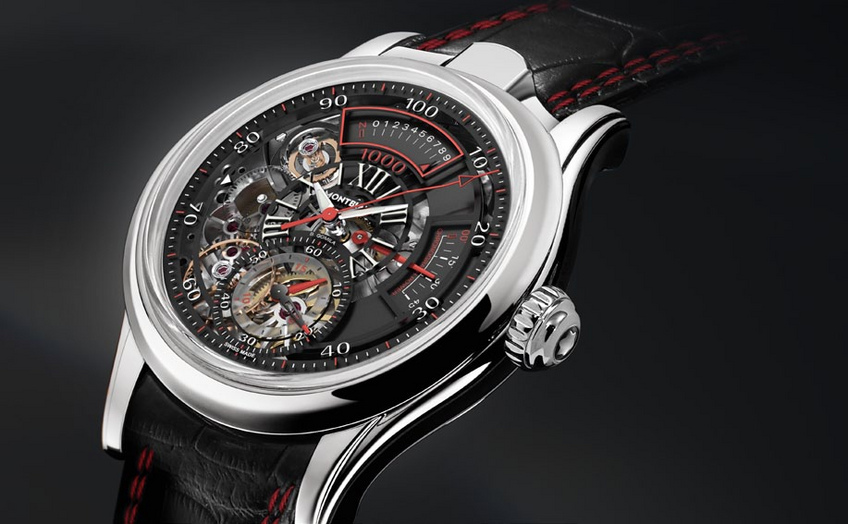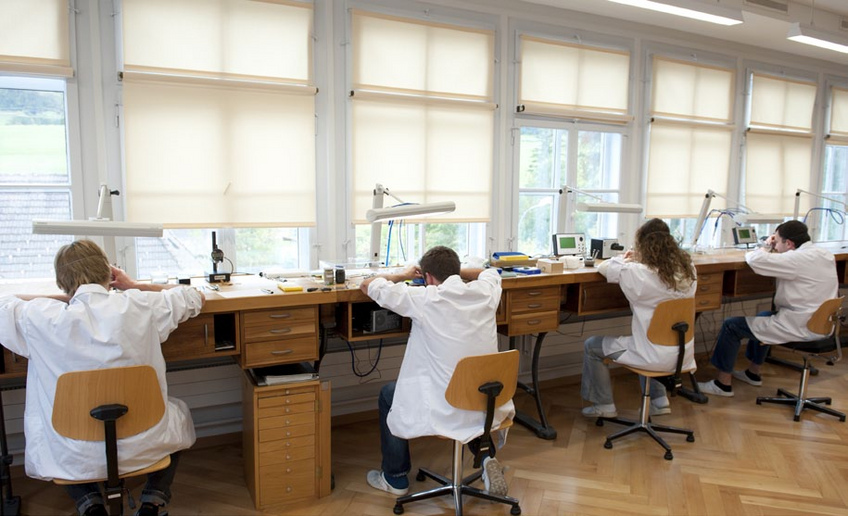

Demetrio Cabiddu: The Art of Mastering Speed
Montblanc is one of the two main protagonists of very high frequencies, with its sublime Montblanc TimeWriter II Chronograph Bi-frequency 1000. The Technical Director of Montblanc Villeret, Demetrio Cabiddu, presents all its fascinating parameters to us…
First published on veryimportantwatches.com
Constantin Stikas: Can we define what is meant today by high frequency?
Demetrio Cabiddu: I do not believe that there is a strictly fixed rule for determining based on what value we can designate a movement as a high frequency one.
Usually, when I talk about high frequencies I tend to think that they start at 28,800VpH [4Hz]...
CS: What do we gain with high frequencies?
DC: High frequencies certainly allow one to obtain operating accuracy (adjustment) faster. High frequencies are less influenced by certain defects of the escapement and are less exposed to the strains caused by movements when worn on the wrist.
CS: What is at risk with a high frequency watch?
DC: In order to obtain a high frequency movement, we must play around with the interplay between scale and force (couple). In order to obtain a higher speed, we must either decrease the regulating component (the balance) or increase the energy (barrel), sometimes at the expense of the aesthetic quality of the movement, the dimensions and power reserve. A risk undertaken concerns long-term longevity: use, as well as deterioration of the oilings can, in the medium term, modify the accuracy achieved at the beginning.
CS: Man has conquered 4Hz, he remained at 5Hz for more than four decades, then we have seen watches at 50Hz, 500Hz and even 1000Hz!... Are there any limits to watchmaking?
DC: The compromise of 28,800VpH [4Hz] was the golden ratio, in my opinion. 36,000VpH [5Hz] poses an advantage for the reading of the tenth of the second, but this frequency demands a perfect mastery of oilings and of wear, which is not something one can take for granted.
This argument is valid notably for watches equipped with only one component regulating its unremitting operation. This is different for timers or watches equipped with a double regulating component, entailing a ‘classical’ speed for the watch and a higher speed for the chronograph, as in the Montblanc TimeWriter II Chronograph Bi-frequency 1000.

CS: There are everyday watches operating at 5, 8 or 10Hz and watches that are better categorised as concept watches operating at 50, 500 or 1000Hz. What is the difference between a high frequency watch that will remain a prototype and a high frequency watch that will be mass produced?
DC: High frequency must permit an accurate observation during timing. Therefore, according to the activity that is being timed (sports or industrial production), different fractions of seconds and minutes are necessary and are researched, such as the 1/10th, the 1/36th, the 1/60th, the 1/100th or the 1/1000th (non-exhaustive list). Except for this usage, the rest is of little use in my opinion.
CS: At Montblanc you have presented the TimeWriter II Chronograph Bi-Frequency 1000, beating at 50Hz, which in addition to the 1/100th of a second, also measures the 1/1000th of a second. Would you like to explain your approach to us?
DC: I have already explained it, in part, in my previous responses. To Montblanc, it was important to take into account the beauty of the movement, as well as use, the oilings etc...
Thus, the first step was to have two regulating components, permitting us to regulate the display of the time in a classical and tested manner.
The second step was to seek a reasonable compromise between functionality, use, easy legibility and the power reserve, on a chronograph with a high-definition display. Our soon one-hundred year experience of timers beating at 360,000VpH offered us some information. Therefore, we did not wish to surpass those limits, since we wanted to retain the conventional escapement. That led us to seek different solutions, while at the same time respecting the principles that are close to our heart.

CS: Would you like to explain for us the use of the two different balances and how you proceed?
DC: Every balance is driven by its own autonomous power source, this permits us to isolate the functioning of every system and to manage the various VpH separately. Thus, for example, if you are not making use of the chronograph, this energy reserve remains constantly available without necessitating of winding.
CS: Minerva is a historical House. In what way is the watchmaking know-how you have attained important to the realisation of such a reolutionary watch and how does one chart new paths?
DC: We always seek to innovate, while simultaneously respecting the tradition and know-how handed down to us from preceding generations. This may appear constraining at times, but ultimately it is very positive and challenging because, once our method of operation has been complied with, it allows free rein to our imagination and encounrages our inventiveness.
CS: Switzerland, to most people, is a ‘slow’ country. However, the CERN is located in Switzerland, and today we have seen Horlogerie regularly beating the high frequency record… What is your opinion?
DC: Switzerland is a tranquil country, which likes things that have been executed well!! Making things well and calmly often leads to making them in a well-thought out manner. This permits, in reality, to move a lot faster than those who, in their haste, are forced to start over again several times in order to reach the same objective.
CS: What is your personal relationship to speed?
DC: Outside the watchmaking context... Speed makes me think of motor sports and the inebriation that this sensation can induce, but my attraction is more human and athletic events have always aroused a great admiration in me, not only for short-distance sprints but also for endurance sports such as 10,000m events and marathons, where resistance and speed must be correctly combined and which demand a mastery that is clearly superior to that entailed by only mastering a single baseline speed.
CS: Do you believe that a speed limit should be imposed on motorways and, if yes, that it should be set at how many km/h?
DC: The legislators who establish the rules are always susceptible to criticism and I often disagree with certain limits that are not very reasonable… It would be appropriate to adapt speed limits in relation to specific sections of roads and to the density of traffic. The speed limit in Switzerland is set at 120km/h and I find it too restrictive…




